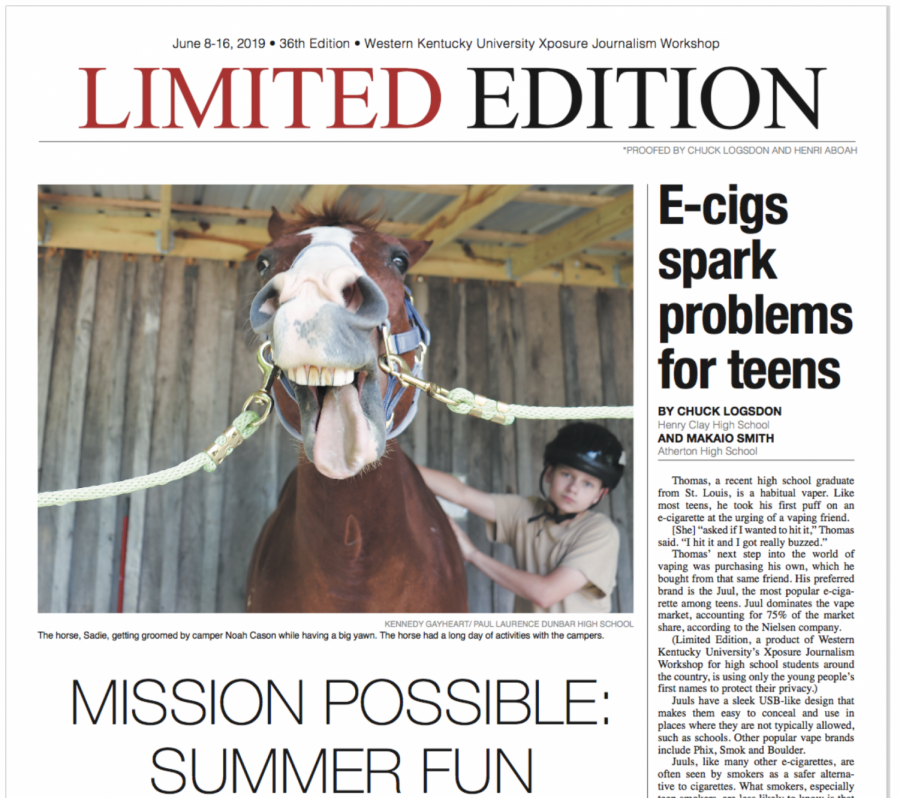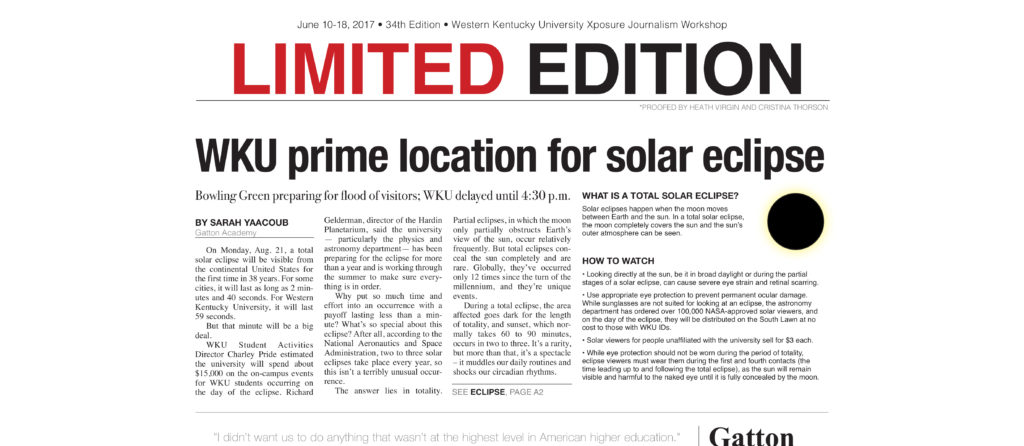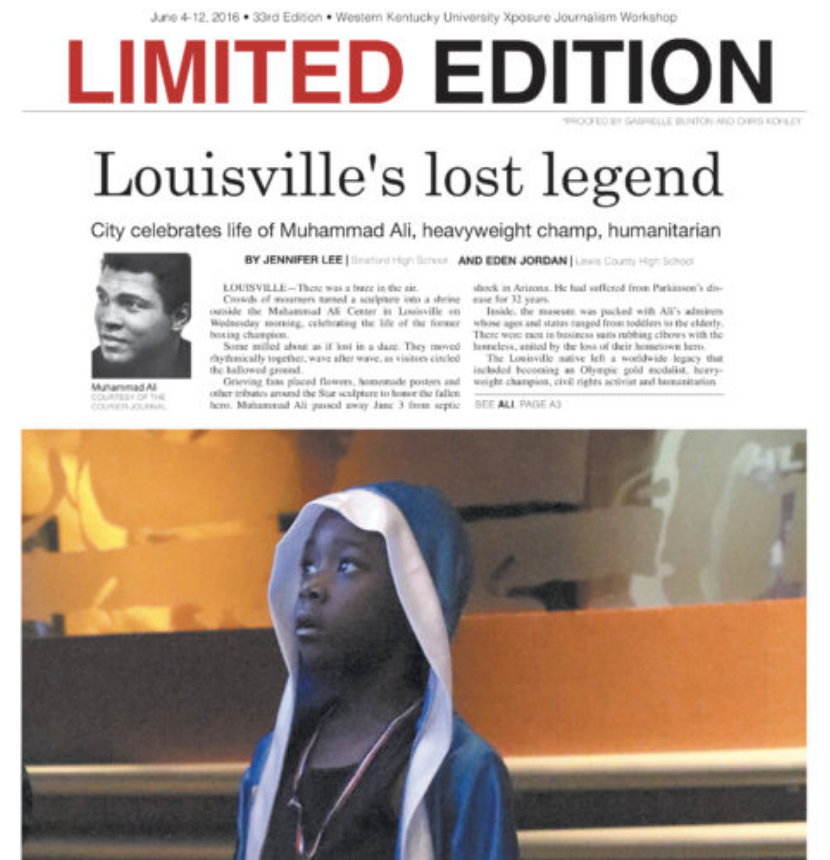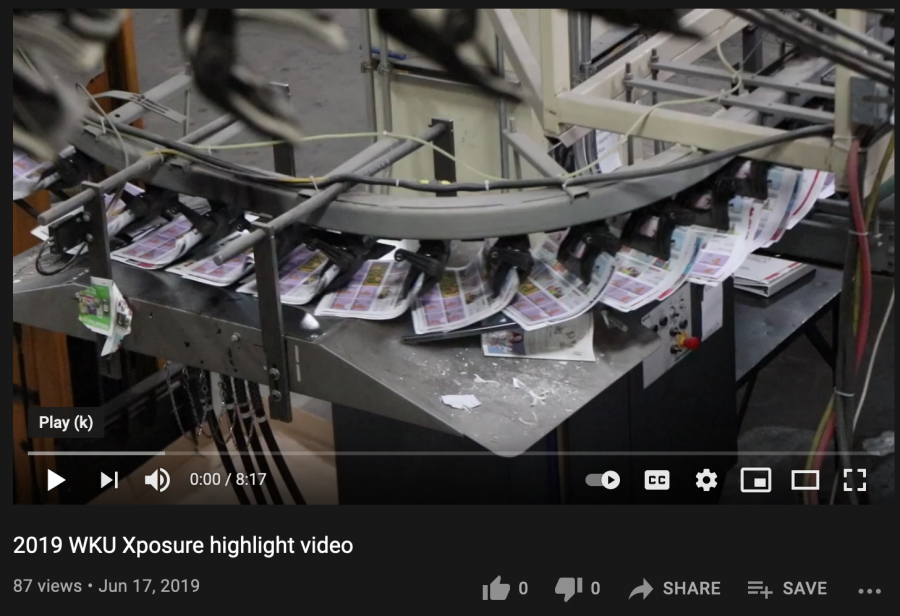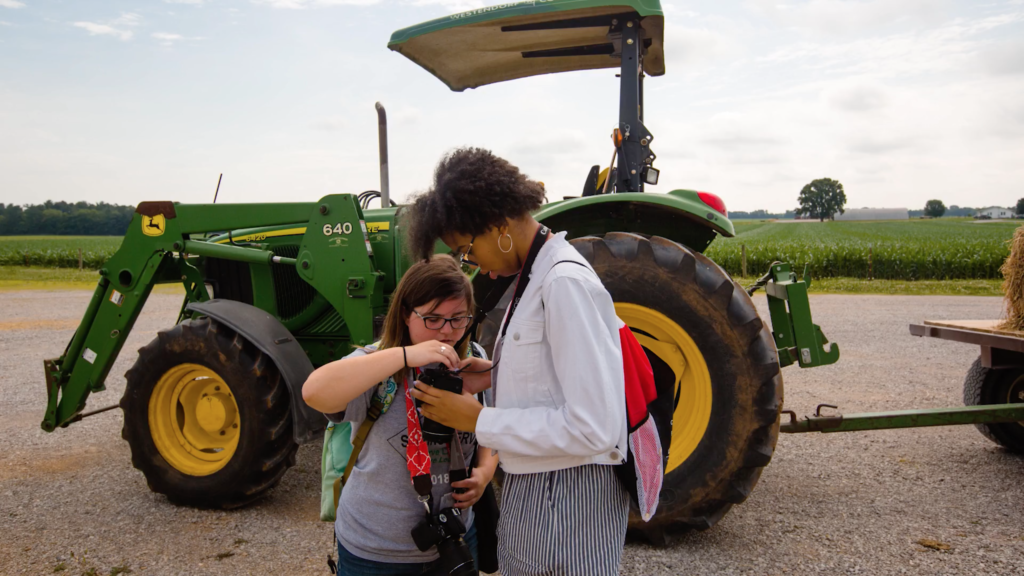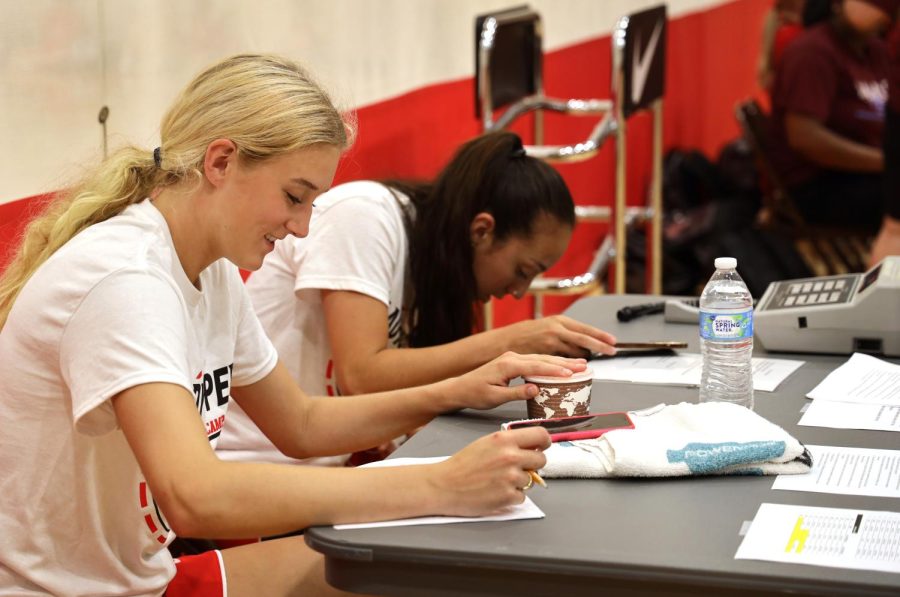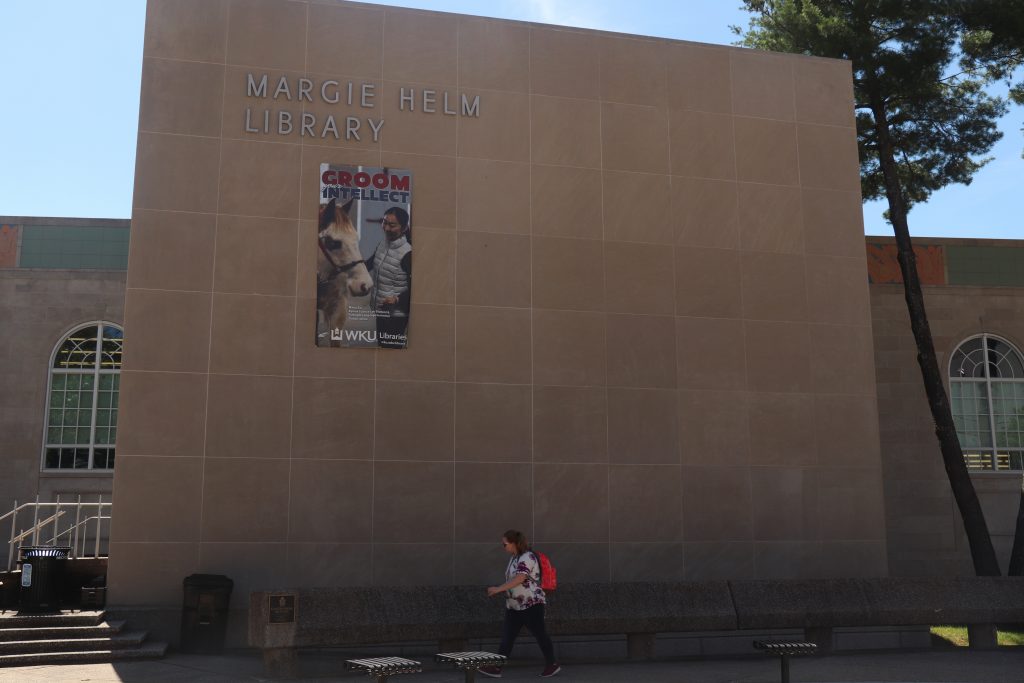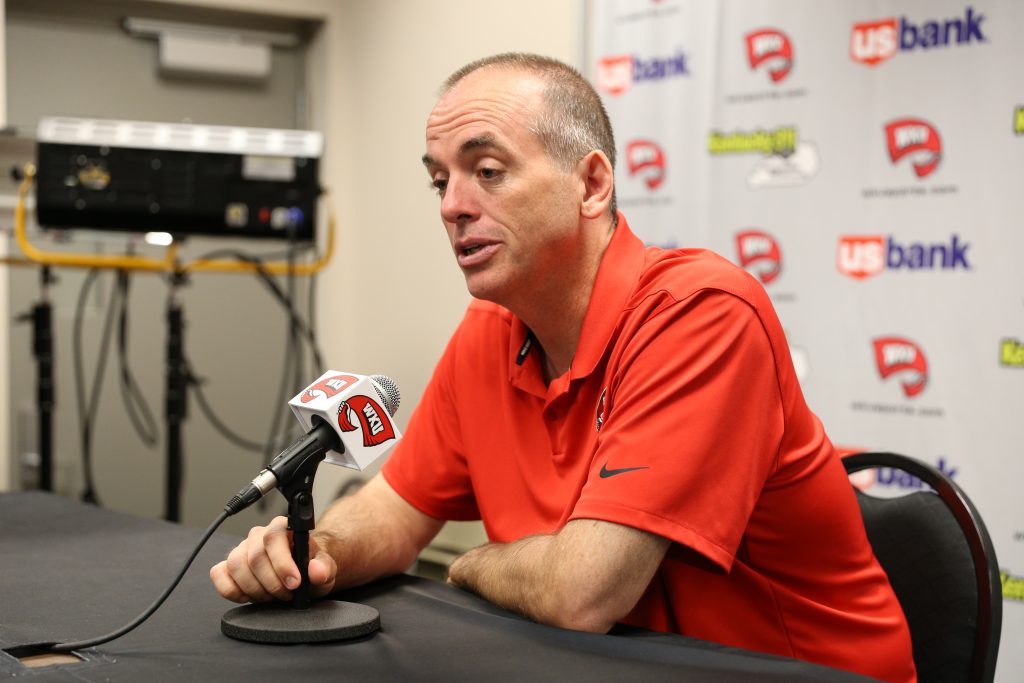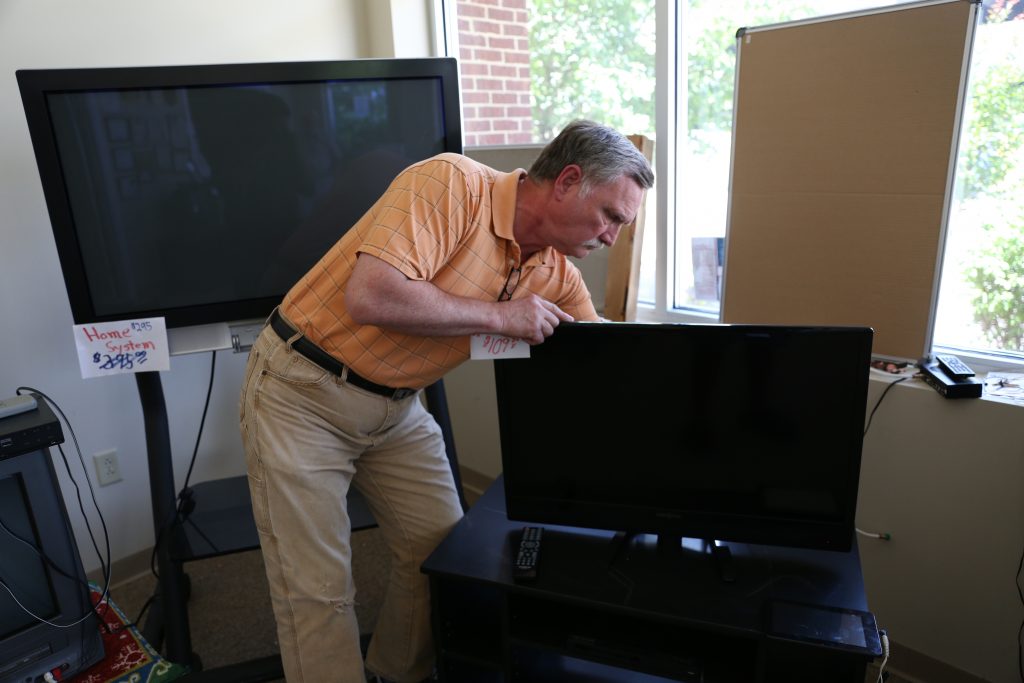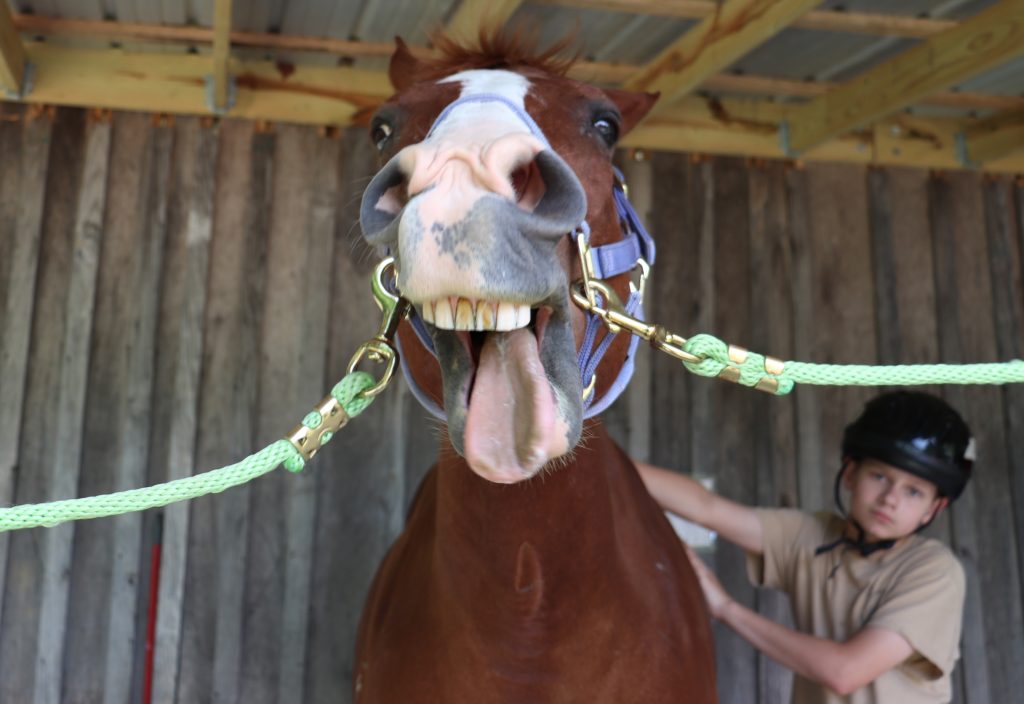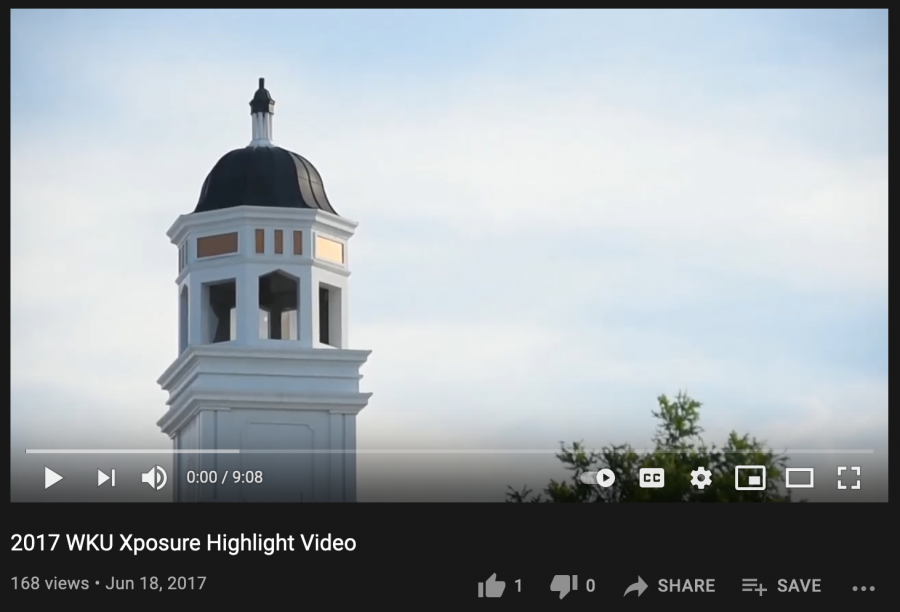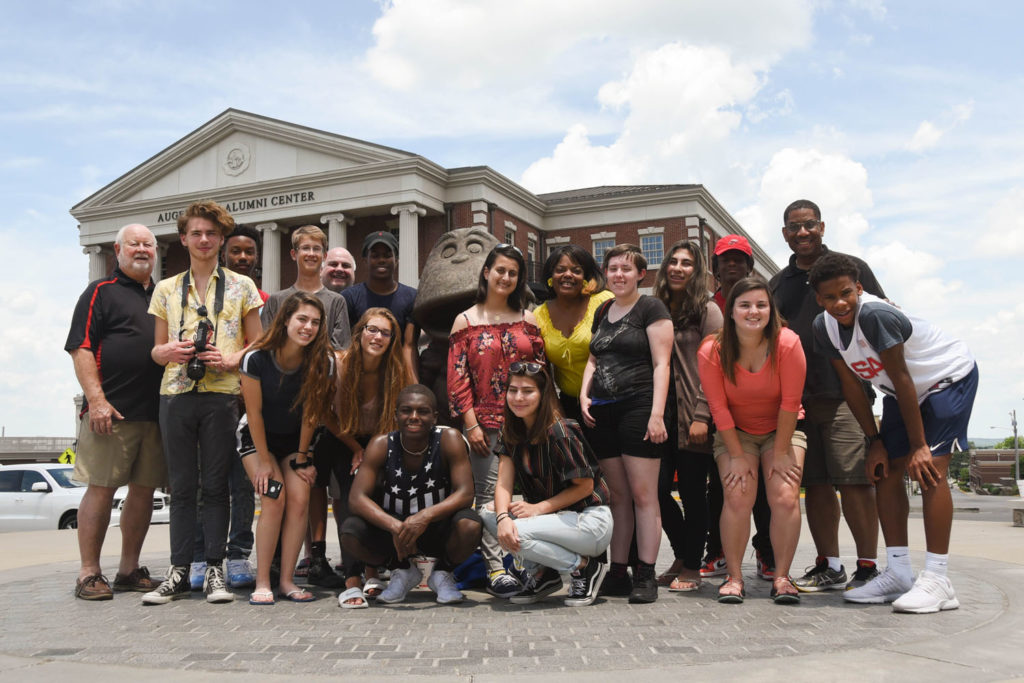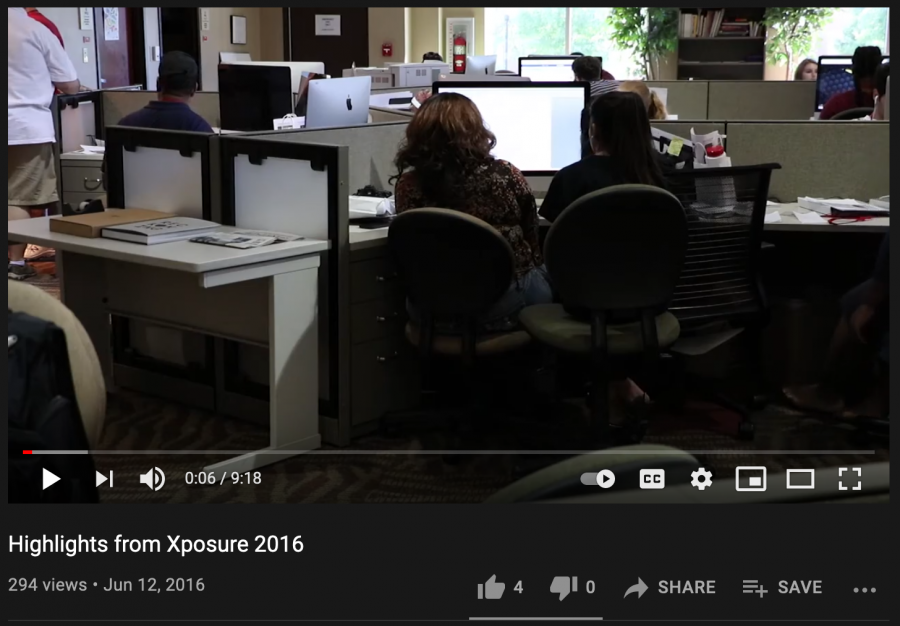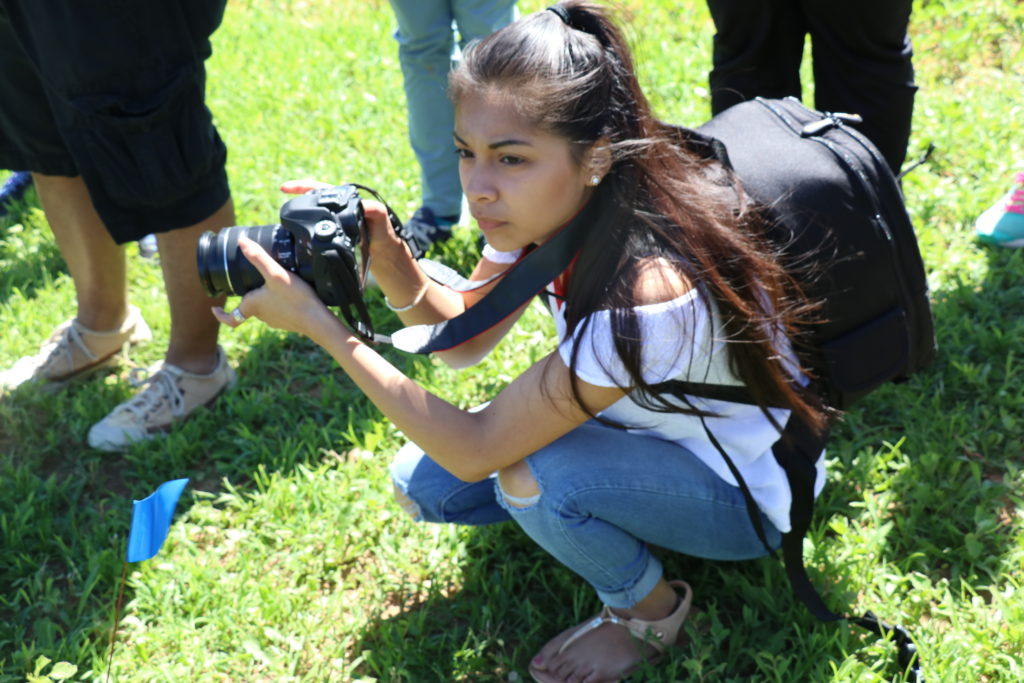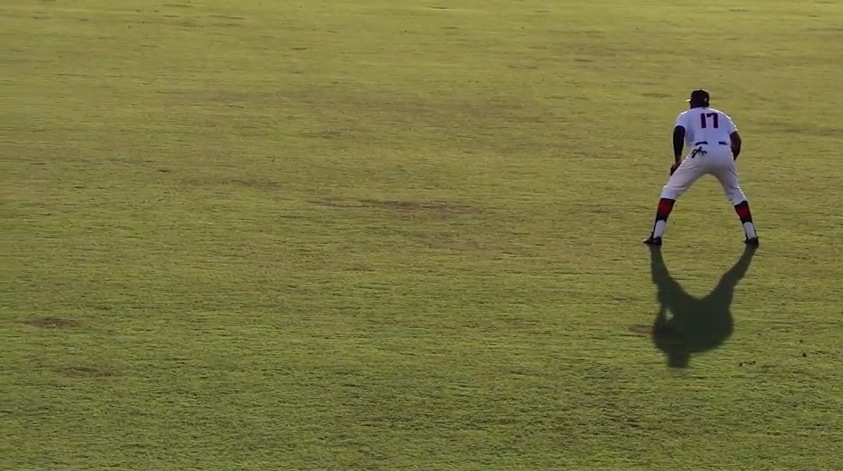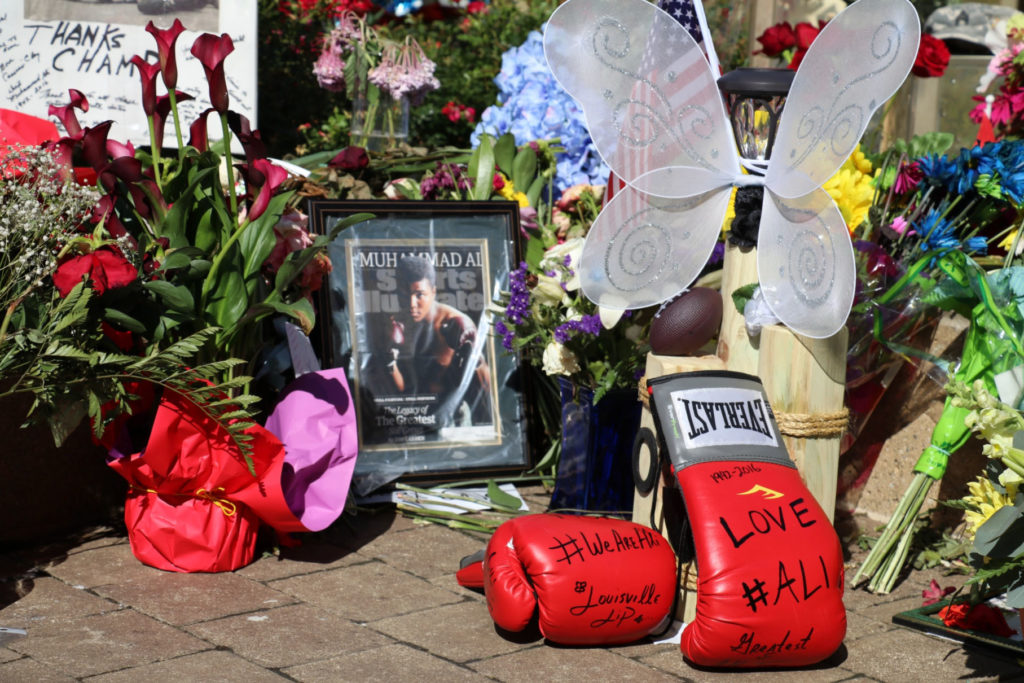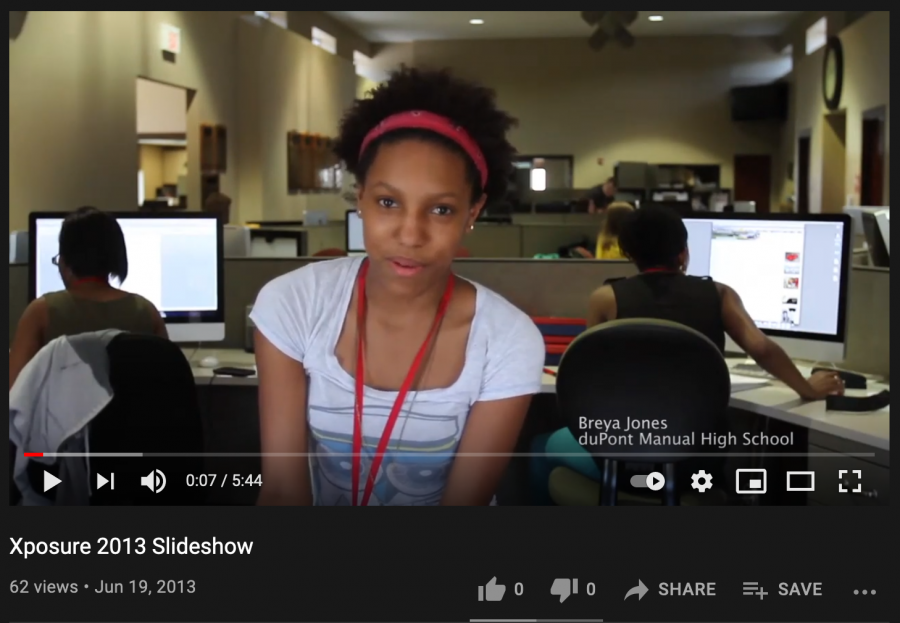More Than a Boxer
Story By: Erica Reeves- Hoover (Ala.) High School
Although most people know Muhammad Ali as a world famous boxer, the Ali Center in Louisville shows not only his boxing side, but also the humanitarian efforts that have captivated millions of people around the world.
Program specialist Sasha Caufield said the Ali Center presents his life through the six core values he lives by – respect, confidence, conviction, dedication, giving and spirituality.
She said the center, which opened in 2005, wants visitors to grasp the Ali legacy beyond his record in the boxing ring, and notice the work that he continues to do despite his struggles with Parkinson’s disease.
Indonesia, Morocco, and the Ivory Coast are just a pinch of places Ali has delivered food, and medical supplies, visited orphanages, soup kitchens and hospitals, giving his time, money and love.
In America, Ali has helped many organizations such as The Cradle, The Make- A-Wish foundation, the Special Olympics, a global nonprofit organization targeting almost 200 million people in nearly 200 counties who have intellectual disabilities. It also runs a school for handicapped children and young adults, the Herbert E. Birch Services, and a summer camp for children with AIDS.
Ali also advocated new laws protecting children at the state capitol in Michigan.
In schools around America, Ali has taken his book Healing and taught the virtues of tolerance and understanding.
In 1997 Ali established the Muhammad Ali Parkinson Research Center on Barrow Neurological institute in Phoenix, Ariz. The center is committed to providing excellence in treatment, research, and education for patients and families affected by Parkinson’s disease and other movement disorders. Caufield said Ali himself receives treatment at the center that he established.
Although Ali had many victories, he also lost a few. Through these losses, he learned how to be human, and take the losses just as well as he took the victories.
After Xposure’s trip to the museum, many have said that their perception of Ali has changed.
“All I knew about him was that he was a boxer, but when I left I had gained so much more insight to the true compassion and dedication he had to give back,” said Jazzy Amica of Jonesboro (Ga.) High School.



Slugger Museum
Story By: Simone Palmieri-Gallatin (Tenn.) High School
Children who visit the Louisville Slugger Museum can hit a ball, crawl into a giant glove, and swing bats used by major leaguers.
“We are definitely kid-oriented,” said Doug Johnson, one of the museum’s tour guides.
Johnson recently guided members of the Xposure journalism workshop through the bat factory, located in the same building as the museum. But before he began the tour, he explained that recent renovations to the museum made the facility more kid-friendly because owners added more hands-on exhibits.
The changes seemed to have worked because the museum was ranked as the No. 1 tourist spot in town by ParentsConnect.com, a website created by Nickelodeon.
Perhaps one of the best-known attractions of the museum is a 120-foot tall bat that leans outside of the building’s entrance.
According to the Louisville Slugger web site, the giant bat is constructed of carbon steel and weighs 68,000 pounds with a 30,000-gallon interior capacity. It measures 9 feet in diameter at the barrel, 3 feet, 6 inches at the handle and 6 feet, 6 inches at the knob.
Inside the building, visitors can see a giant baseball glove made of 450-million-year-old Kentucky limestone. The 12-foot-long, 9-foot-wide fielder’s mitt is 4 foot high, just big enough to entice children (and some adults) to climb on it.
The glove, delivered in 1998, was sculpted by Albert Nelson and Kimberly Hillerich, the great great granddaughter of Louisville Slugger founder Bud Hillerich.
Another attraction in the museum is an exhibit called “Hold a Piece of History,” where visitors can rummage through drawers and feel the artifacts, like gloves and other baseball memorabilia.
“The kids are able to put their hands on history,” Johnson said.
Zach Redman, a Western Kentucky University student and museum employee, said the children enjoy being allowed to play with the display items.
Gift shop employee Jill Zangari, also a WKU student, arranged for the Xposure students to visit the bat vault where bats from past hitting stars are kept.
The museum also has batting cages and T-ball areas where children can try out their own skills, an exhibit where visitors can hold bats used by stars such as Mickey Mantle, and life-size statues of players such as Babe Ruth and Ken Griffey Jr.
Visitors who are willing to pay a few dollars can tour the adjoining factory to see the bat-making process and how the company takes extra care to craft the bats of major league players. And at the end of the tour, each visitor gets a Louisville Slugger mini-bat.
“I liked seeing the way the bats are made, and I liked getting my own little bat,” said young Allyson Teban, who toured with her parents, Marcy and Scott Teban.
On the factory tour, people can learn that each major league player contracted with Louisville Slugger has a specific bat template, and that on each Mother’s Day, the company provides pink bats to major leaguers who then sell the game-used bats to raise money for breast cancer research and awareness.
And in the gift shop, tourists can order a model of their favorite player’s bat or purchase a personalized bat.

This year marks the 126th anniversary for Louisville Slugger. Speculators on the museum website claim to know the origin of “Louisville Slugger.”
After immigrating to the U.S. in 1842 and establishing his shop in 1856-1864, J. Frederick Hillerich was against crafting baseball bats.
However, his son, Bud Hillerich, 17, was a huge baseball fan. At the time, Bud’s hero was Pete Browning, a professional on Louisville’s American Association team – the Eclipse.’ Bud witnessed Browning break his bat and offered to craft him a new one.
Browning accepted and had three hits the next game. From those three hits on, Browning’s nickname was the “Louisville Slugger.’” Hence the name that dominates the bat industry, crafting bats for 60 percent of major leaguers
• 1856 – J. Frederick Hillerich opens his woodworking shop
• 1884 – Hillerich crafts his first pro bat
• 1910 – The workshop is damaged in a fire, but survives.
• 1916 – Frank Bradsby, advertisement specialist, becomes a full partner to the company.
• 1920 – J. Frederick Hillerich dies and Bud takes over
• 1937 – The Ohio River floods, but once again, the shop survives
• 1946 – Bud Hillerich dies and his son Ward takes over
• 1949 – Ward Hillerich dies and J. A. Hillerich Jr., takes over
• 1970 – The company introduces the aluminum bat.
• 2001 – John A. “Jack” Hillerich III retires as the CEO and President of Hillerich and Bradsby Co.
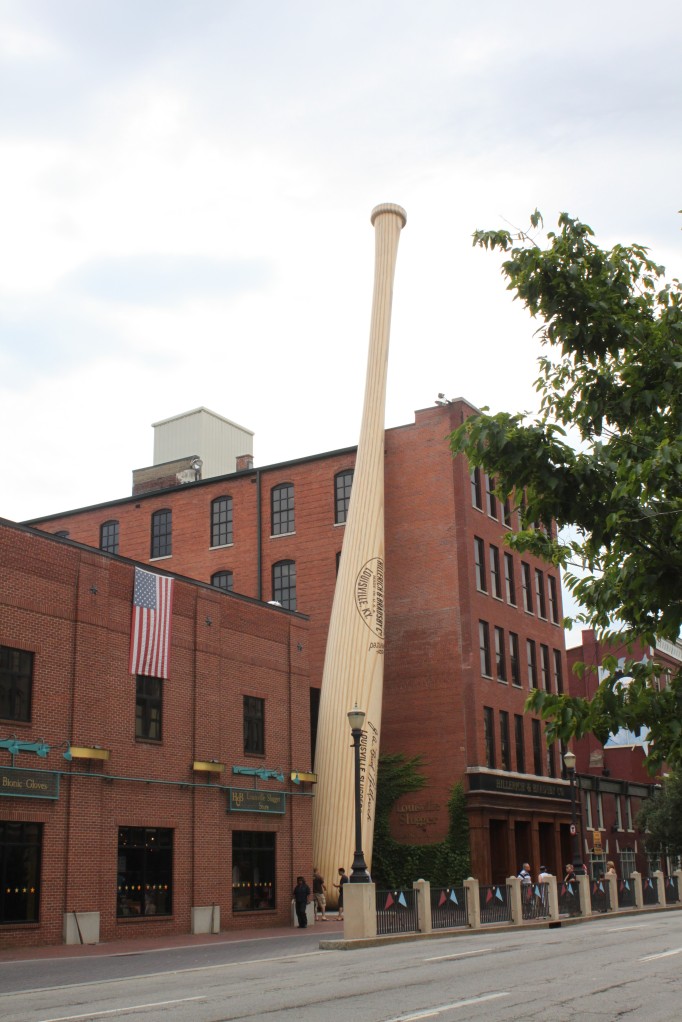

Courier-Journal
Story by: Charley Nold-duPont Manual (Ky.) High School
Everyone is feeling the hard economic times, but The Courier-Journal has plans to keep the newspaper printing into the future.
Six Courier-Journal employees – reporter Chris Otts, photojournalist Kylene Lloyd, columnist Betty Baye. online producer Rob Gates, editorial writer and columnist Pam Platt and Executive Editor Bennie Ivory – sat down with 12 students from the Xposure Journalism Workshop on June 8 for a casual lunch and discussion about what good journalism is and what the newspaper has done to embrace a changing market.
“I’ve witnessed the transition from print to online,” Gates said.
The paper realized that in order to stay competitive it had to change. “We try to make news more attractive to catch a younger eye.”
Gates said the paper’s website, courier-journal.com, appears less stuffy and formal than the paper.
“We tend not to lighten the content, but to lighten the way it’s written,” he said.
In an effort to make the news more appealing, the website recently incorporated polls to find what readers did and did not like. The Courier-Journal also incorporated videos and other multimedia features.
The paper has made several entertainment websites and publications catered to specific audiences such as Herscene, a quarterly glossy magazine for women on fashion, and Metromix, a website for younger generations.
At m.courier-journal.com the students could find a text alert service for stories that “spread the gamut.”
According to Gates, subscriptions to the text messaging service, which gives subscribers breaking news at their fingertips, have been growing steadily.
The Courier-Journal also increased its presence with new forms of social media such as Facebook and Twitter. They currently have 400 followers on Twitter and more than 900 fans on Facebook.
Although there are many changes in the way people can get their news, Ivory said that print was often more reliable factually than the web.
For this reason, Ivory did not think that print journalism was in any danger.
“Some people think that newspapers are dying,” said Ivory. “Well, no, they aren’t— print is going to be around for awhile.”



